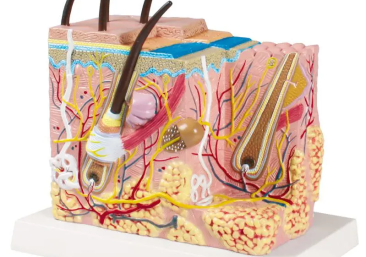Skin cancer is the most commonly diagnosed cancer in Australia. Approximately, two in three Australians will be diagnosed with skin cancer by the time they are 70. Non-melanoma skin cancer is more common in men. Melanoma is the third most common cancer in Australians.
Facts about Skin Cancers in Australia
Every year, in Australia:
- skin cancers account for around 80% of all newly diagnosed cancers
- the majority of skin cancers are caused by sun exposure
- GPs have over 1 million patient consultations per year for skin cancer
- the incidence of skin cancer is one of the highest in the world
In 2015, 2162 people died from skin cancer in Australia, 1520 from melanoma and 642 from non-melanoma skin cancers.
Most skin cancers can be detected and treated in the early stages, this is when they are most curable.
Even for melanoma, the five-year survival rate is 99% for people whose melanoma is detected and treated before it spreads to the lymph nodes.
How Can I Detect Skin Cancer?

Simply look at your skin. By knowing what is normal for your skin, and then checking it on a regular detects most skin cancers
Take note of all existing spots, moles and freckles on your skin, so that you’ll know when changes occur or a new one appears. Check the back of your neck, scalp, buttocks and other hard-to-see places. Don’t forget the bottoms of your feet and between your toes and fingers, even under the nails.
What Melanoma Looks Like?

- A new lump, growth or spot
- A change in size, shape, and/or colour. Any change.
- A sore that doesn’t heal or heals but comes back.
- A red or brown patch that is rough and scaly. A scale that falls off but recurs.
- A pink, pearly lump that bleeds easily. Blood on the pillow or towel.
- Any mole or spot that is asymmetrical, or has an irregular border or uneven colour.
- Any mole or spot larger than 6mm
Blood tests and imaging scans like MRI or CT are not used as screening tests for skin cancer. Imaging may detect signs of advanced disease and spread
If you have a suspicious spot – get it checked. Make an appointment with your General Practitioner or a dermatologist as soon as possible.
As part of the examination, a dermatoscope may be used this is magnifying lens and light source held near the skin. Suspicious lesions or spots may need a biopsy, removing all or part of the abnormal area for examination by a pathologist. The biopsy is a minor procedure.
If the diagnosis is melanoma or certain types of squamous cell carcinoma, that have a risk of spreading, may require additional testing to check whether the deeper in the skin or if it has spread to lymph nodes or other parts of the body. These tests may include blood tests, imaging such as MRI, CT or PET scans or procedures, such as lymph node biopsy or removal.
What are the Risk Factors for Skin Cancer?
Anyone can get skin cancer, regardless of skin colour. Some factors may increase your risk, including:
- A personal history of skin cancer
- A family history in two or more relatives
- Skin that burns, freckles, reddens easily, or becomes painful in the sun
- Blue or green eyes
- Blond or red hair
- Unprotected exposure to sun
- A history of indoor tanning
- Certain types and a large number of moles
- A family history of skin cancer
- Numerous precancerous lesions.
- Having had an organ transplant or steroid treatment (immunosuppression).
- Increasing age as this usually increases your exposure
- Familial Atypical Multiple Mole Melanoma Syndrome (FAMMMS)
- Certain rare genetic disorders, including xeroderma pigmentosum and basal cell nevus syndrome
Those with a higher risk for skin cancer should have a thorough skin screening at least once a year.
For all types of skin cancer, prevention includes awareness and avoiding ultraviolet radiation exposure from both sunlight and tanning beds.
Staying out of the sun between 11 a.m. and 3 p.m.; using a broad-spectrum water-resistant sunscreen with SPF of at least 50 and covering exposed skin with protective clothing when outdoors, even on a cloudy day.
How to Protect Your Skin from the Sun?
For best protection, when the UV level is 3 or above, we recommend a combination of sun protection measures:
- Slip on some sun-protective clothing – cover as much skin as possible
- Slop on broad spectrum, water resistant SPF50+ sunscreen. Put it on 20 minutes before you go outdoors and every two hours afterwards. Sunscreen should never be used to extend the time you spend in the sun.
- Slap on a hat – that protects your face, head, neck and ears
- Seek shade
- Slide on some sunglasses – make sure they meet Australian standards.
Be extra cautious in the middle of the day when UV levels are most intense.
Sunburn vs Tan
Sunburn
Sunburn causes 95% of melanomas. In Australia, 1 in 8 adults and 1 in 5 teenagers are sunburnt on an average summer weekend. Many people get sunburnt with water sports and activities at the beach or a pool, as well gardening or having a barbeque.
Sunburn is also common on cooler or overcast days. Sun exposure that doesn’t result in burning can still cause damage to skin cells and increase your risk of developing skin cancer. Evidence suggests that regular exposure to UV radiation year after year can also lead to skin cancer.
Tan
A tan is not a sign of good health. Tanning is a sign that you have been exposed to enough UV radiation to damage your skin. This will eventually cause loss of elasticity (wrinkles), sagging, discolouration and even brown patches to appear on your skin. Worst of all, it increases your risk of skin cancer.
A tan will offer only limited protection from sunburn, usually equivalent to SPF3. It does not protect from DNA damage, which can lead to skin cancer. Some people who use fake tans mistakenly believe it will provide them with protection.
Non-melanoma skin cancers
Non-melanoma skin cancers are the most common cancers in Australia, most are not life-threatening.
There are two main types:
- basal cell carcinoma (BCC)
- squamous cell carcinoma (SCC)
A third group of lesions called keratinocyte dysplasias includes solar keratosis, Bowenoid keratosis and squamous cell carcinoma in-situ (Bowen’s disease). These are not invasive cancers, however may require treatment as some may develop into non-melanoma skin cancers.
In 2015 there were 642 recorded deaths in Australia from non-melanoma skin cancers.
Squamous Cell Carcinoma (SCC)
Squamous cell carcinoma (SCC) accounts for about 30% of non-melanoma skin cancers. It begins in the upper layer of the epidermis and usually appears where the skin has had most exposure to the sun (head, neck, hands, forearms and lower legs). SCC generally grows quickly over weeks or months. Squamous cell carcinoma symptoms may include:
- thickened red, scaly spot
- rapidly growing lump
- looks like a sore that has not healed
- may be tender to touch.
Basal Cell Carcinoma (BCC)
Basal cell carcinoma (BCC) accounts for about 70% of non-melanoma skin cancers. It begins in the lower layer of the epidermis (top, outer layer of the skin). It can appear anywhere on the body but most commonly develops on parts of the body that receive high or intermittent sun exposure (head, face, neck, shoulders and back). BCC often has no symptoms and tends to grow slowly without spreading to other parts of the body. Symptoms of BCC may include:
- a pearly lump
- a scaly, dry area that is shiny and pale or bright pink in colour.




